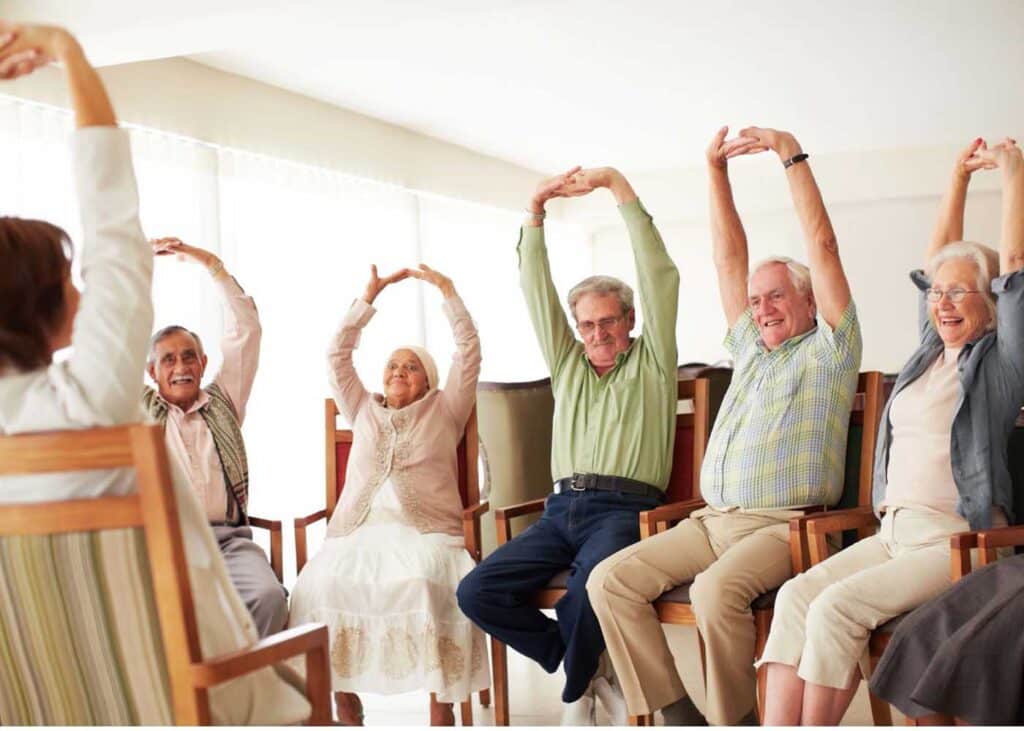Gentle Workouts for Mobility and Strength
Staying active is essential for seniors to maintain mobility, strength, and overall well-being. Regular exercise can help improve balance, reduce the risk of falls, and enhance mental health. Fortunately, many gentle exercises can be performed at home without special equipment. Here are some of the best exercises for seniors to stay active and healthy.
1. Chair Exercises
Chair exercises are great for seniors with limited mobility or balance concerns. They provide a safe way to strengthen muscles and improve circulation.
- Seated Marching – Sit up straight in a sturdy chair and lift one knee at a time as if marching.
- Seated Leg Lifts – Extend one leg straight out, hold for a few seconds, and lower it back down.
- Seated Arm Circles – Hold arms out to the sides and make small circles forward and backward.
2. Gentle Yoga and Stretching
Yoga helps improve flexibility, balance, and relaxation. Stretching exercises can reduce stiffness and enhance the range of motion.
- Neck Stretch – Gently tilt your head to one side, holding for a few seconds, then switch sides.
- Shoulder Rolls – Roll shoulders forward and backward in a circular motion.
- Seated Forward Bend – Sit on a chair, hinge forward slightly from the waist, and stretch toward your toes.
3. Balance and Stability Exercises
Improving balance is crucial for preventing falls. These simple exercises can help build stability.
- Heel-to-Toe Walk – Walk in a straight line, placing one foot directly in front of the other.
- Single-Leg Stand – Hold onto a sturdy surface and lift one foot off the ground for a few seconds.
- Side Leg Raises – Hold onto a chair for support and lift one leg to the side, then lower it slowly.
4. Strength Training with Light Weights
Building muscle strength helps support joints and overall mobility. Light dumbbells or household items like water bottles can be used.
- Bicep Curls – Hold a weight in each hand, curl the arms toward the shoulders, and lower slowly.
- Wall Push-Ups – Stand facing a wall, place hands shoulder-width apart, and push your body toward the wall and back.
- Shoulder Press – Hold weights at shoulder height and slowly press upward, then return to the starting position.
5. Cardiovascular Exercises
Cardio exercises improve heart health and endurance. Low-impact movements can still provide great benefits.
- Walking in Place – March in place for a few minutes to get the heart pumping.
- Step Touches – Step side to side while swinging the arms gently.
- Toe Taps – Tap toes in front of you, alternating legs to maintain movement.
Tips for Safe Exercise
- Always warm up before starting any workout to avoid injury.
- Stay hydrated and listen to your body’s signals.
- Use a sturdy chair or support for balance exercises.
- Start slow and gradually increase the duration and intensity.
Regular exercise can significantly improve the quality of life for seniors. By incorporating these gentle movements into a daily routine, seniors can maintain their independence, reduce health risks, and enjoy a more active lifestyle. Start with just a few minutes a day and gradually build up to a comfortable routine. Stay moving, stay healthy!



